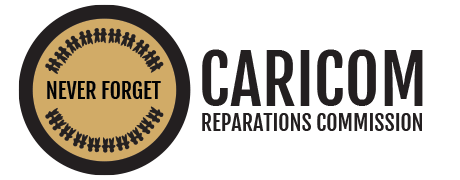One lesson from international efforts: Keep reparations distinct from general social support.
By Peter Dixon
As Black Lives Matter protests have surged across the United States, several cities and at least one state have taken significant steps toward offering reparations for slavery and its legacy of systemic racism, including Evanston, Ill.; Asheville, N.C.; Burlington, Vt.; Providence, R.I.; and California. Discussions about U.S. reparations for Black people have been underway for years, but the momentum “feels different this time,” as New York Times journalist (and “1619 Project” leader) Nikole Hannah-Jones wrote in June.
These efforts are likely to struggle with the challenges that have hindered reparations programs globally for decades. In particular, the line can blur between social policies offered to people because they are in need — or simply because they are citizens — and reparations for those whose rights have been violated. Such blurring reduces the potency of reparation as a material and symbolic act of justice.
Reparation or relief?
Reparations programs generally fall into two categories: judicial reparations, ordered by a court; and administrative reparations, provided by a government through legislation. Reparation and relief blur far more easily in the latter.
As the United Nations outlined in its 2005 Basic Principles and Guidelines on the Right to a Remedy and Reparation, reparation means more than financial compensation. Reparations measures are intended to be an act of justice that not only addresses harm but also recognizes that recipients’ rights were violated. Along with several key differences, this separates reparation from social policies like welfare and from international humanitarian assistance and development aid.
Relief, assistance and aid are clearly important in contexts where poverty, inequality and violence are linked. Scholars and practitioners have argued for blended approaches. But it’s problematic when the two are indistinguishable or when relief replaces reparation. Countries where the line has blurred, all through administrative programs, include South Africa, Indonesia, Nepal, Peru and Colombia.
Colombia, for example, has been lauded for its recent and historic efforts to provide reparations to millions of victims of an internal armed conflict that had pitted government forces, right-wing paramilitaries and left-wing armed groups against one another since the 1960s. Worried about the cost of such a program, however, the government tried to reclassify as “reparation” its existing subsidies for displaced people, who today constitute 90 percent of the conflict’s 9 million registered victims. Colombia’s Constitutional Court ruled that such repackaging violated the rights of victims to true reparation.
In practice, many Colombian reparations recipients have had trouble differentiating the compensation they receive as victims of the armed conflict from other forms of financial support they receive from the government because they are poor. For them, what could be the government’s history-defining act of contrition for a half-century of bloodshed is just another check or financial transfer.
Why it matters
Making generalizable claims about reparations’ impact is difficult. Most arguments for a distinction between reparations and relief have relied on theory, morality or law to make the case. But research among diverse groups, including torture survivors, victims of war crimes and crimes against humanity, and those who have provided their testimony to truth commissions, offers evidence that harm is compounded when victims do not receive justice that they are promised. This is especially important in cases such as Colombia (or the United States) where the scale of harm far exceeds a judicial system’s capacity to carry out justice — putting more pressure on reparations to deliver.
Sometimes, when harm has been less widespread or when there are resources to deliver, administrative reparations programs have been more easily distinguished from relief — and it has mattered. For instance, Germany’s reparations programs for Holocaust victims have fostered healing through long-term support and generous financial compensation. Chile and Argentina also have been well regarded for comprehensive and long-term measures such as pensions and scholarships to repair the harm of their brutal dictatorships, while also undertaking truth-seeking efforts, accepting responsibility, investigating crimes and reforming institutions.
Government support vs. government responsibility
Under the U.N.’s Basic Principles, governments have an obligation to provide effective remedies to victims of gross violations of international law, even where countries did not commit these violations themselves. But governments have been actively chipping away at enforcement of such responsibilities. At the International Criminal Court in The Hague, for example, countries had to agree on rules about who would be responsible for reparations awards issued by the court, which prosecutes individuals for acts of genocide, war crimes and crimes against humanity. Early proposals actually left the door open for some form of government responsibility for reparation, but that was shut down by a group of countries that included the United States.
But what happens when the government is directly responsible for harm, and when this harm stems from centuries of violence? The challenge is daunting. Internationally, reparations programs have often failed to account for long-term harm, tending to focus more on physical or “spectacular” violence than on less visible forms that are linked to economic crimes or structural disenfranchisement.
If reparations programs can actually be implemented in the United States, it will still be difficult to articulate — and communicate — that these efforts are targeting generations of economic harms perpetrated against Black people, not just the present-day needs that such harm has fostered and perpetuated.
This work is just beginning. In Asheville, for example, the city council apologized for its history of slavery and discrimination and established a commission to identify investments and policy priorities in which Black residents have been systematically disadvantaged. The city seeks to repair these disadvantages by identifying resources to fund reparations, boosting Black economic mobility and opportunity, and increasing Black families’ wealth across generations.
True reparations measures recognize that people’s rights have been violated, ideally accompanied by the offender’s acknowledgment of culpability. They specifically target the harms that victims suffered. True reparation is not a panacea, but it is possible in the United States.
Peter Dixon (@pedrodixon) is a research scientist in the Conflict Resolution and Coexistence Program at Brandeis University and co-principal investigator of the Everyday Justice project at Everyday Peace Indicators




